Art for healing the military-civilian divide
This is the first of a two-part feature on art and veterans. Read second story here.
The challenges facing military service members, veterans, and their families and caregivers today are “more than the traditional medical model can solve.”
That’s a quote from a 2016 briefing published by the National Initiative for Arts & Health in the Military, and it sums up a complex confluence of issues: Combat deaths for U.S. service members have decreased over time, but a larger proportion of combat veterans are left with severe and lasting injuries, including post-traumatic stress and traumatic brain injury. Military members who served in Iraq and Afghanistan have experienced multiple and extended deployments, while those who served in Vietnam, who make up the largest segment of the current veteran population, continue to suffer the effects of trauma. And the nature of military life, including the fact that an active draft has not existed for decades, makes it easy for members of the military to feel disconnected from their wider communities, and for their difficulties to remain hidden.
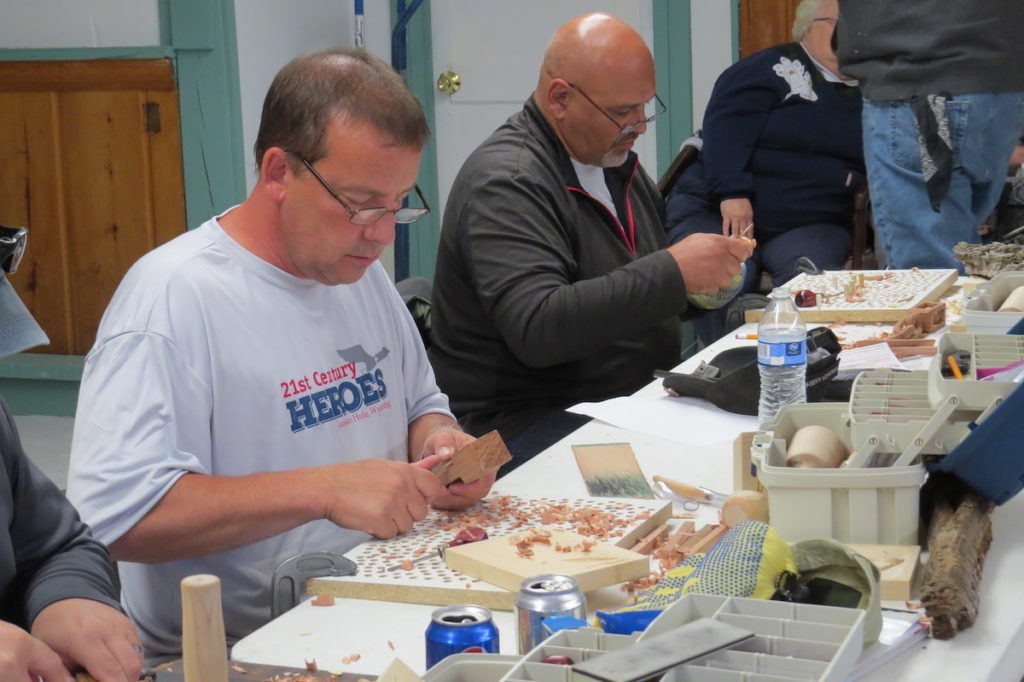
The National Initiative for Arts & Health in the Military, led by Americans for the Arts, promotes art as a solution to those challenges, supporting the arts for the health and wellbeing of active duty service members, veterans, their families, and caregivers. The National Initiative sees the arts as valuable throughout the military continuum, from deployment to re-entry and reintegration, building resilience and coping skills, and helping those transitioning into civilian communities.
“I talk to so many [veterans and service members] that say the arts saved their lives,” says the National Initiative’s Susan Saloom, where she is the Military and Veterans Arts Initiative Field Specialist. For those who serve or have served in combat, and may face physical, mental, and moral injury, “Art gives them a way to express the unthinkable, the things that human beings shouldn’t have to deal with, but unfortunately they do.”
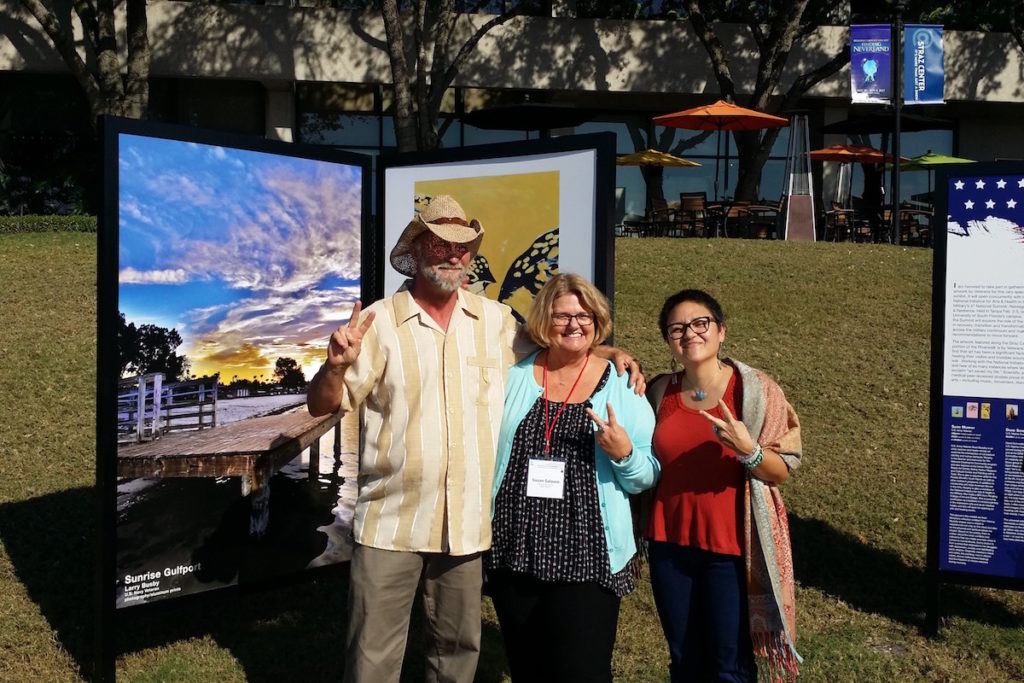
The first National Summit: Arts in Healing for Warriors was hosted in October 2011 by Walter Reed National Military Medical Center and the National Intrepid Center of Excellence, bringing together military branches and civilian agencies to discuss the value of the arts for therapy and recovery. After that first summit was a success, the National Initiative was created under the leadership of Americans for the Arts.
In 2017, the National Summit added a new dimension: It was the first time that the event included a performance venue and practitioner workshops. Americans for the Arts partnered with the University of South Florida and the Tampa-based organization Art2Action to present the R&R Festival: From Recovery to Regeneration, offering a lineup of musicians, dancers, theater performers, poets — many of them veterans themselves. That meant that the civilian and military leaders in attendance got to experience art by, for, and about veterans as they were discussing the value that such art offers.
“It was an extraordinary four-day festival, and I feel that doing it in conjunction with the National Summit just grounded it in real research and policy conversations and dialogue,” says Andrea Assaf, founding artistic director of Art2Action.
Besides hosting national summits and other convenings, the National Initiative drives research and advocacy, and connects arts programs that serve service members and veterans at state and local levels. They also provide guidance to organizations and artists looking to launch new programs, including the free online publication “Arts Deployed: An Action Guide for Community Arts & Military Programming.”
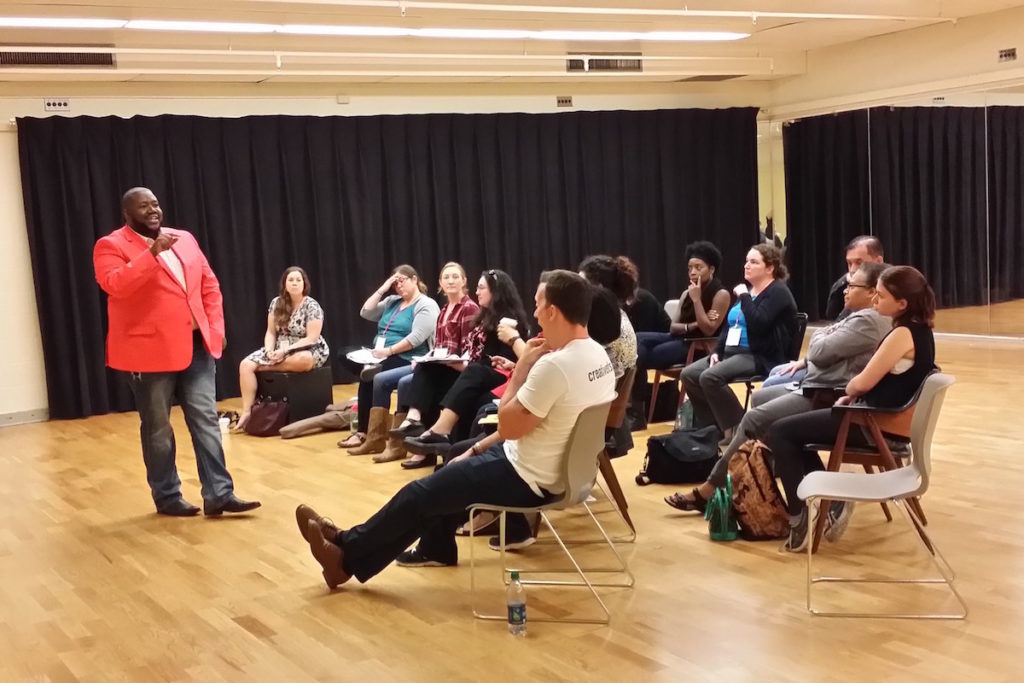
In 2014, Saloom joined National Initiative Director Marete Wester, who is also the Senior Director of Arts Policy at Americans for the Arts. Wester coordinates partnerships with the Department of Veterans Affairs’ Office of Patient-Centered Care and Cultural Transformation, and with the National Endowment for the Arts’ Creative Forces: Military Healing Network, administered by Americans for the Arts.
Saloom maintains the National Initiative’s web page and social media, as well as the National Initiative Directory. This resource lists artists, arts organizations, veteran artists, and agencies around the country who offer arts programming of all disciplines, including spoken word, creative writing, bronze casting, glass blowing, rock music, studying and performing Shakespeare — and the list goes on.
Making and participating in art, Saloom says, helps soldiers process complex emotions and traumatic experiences, from the time they join the military through deployment and later returning to their homes and communities.
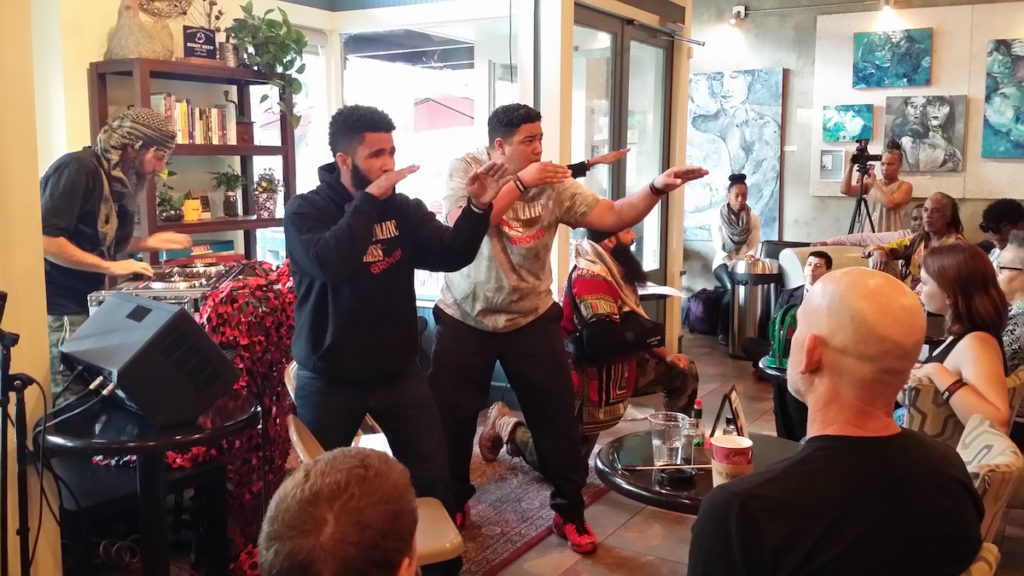
“Any type of art, it increases focus, it improves mood, it has a calming effect, it brings down blood pressure,” Saloom says. “It helps you express the feelings you have, maybe about leaving your family or going over [for a second or third deployment].”
Veterans can begin building resilience and coping skills through the arts before being deployed, Saloom explains. “Then when they return, it’s a familiar vehicle for them to express the things that occurred, that maybe they can’t talk about,” she says.
For veterans transitioning back into civilian life, leaving the military can be a loss of purpose, identity, and familiar culture. Creating art allows them to concentrate on “a project with a beginning and an end,” says Saloom. “There’s focus, there’s completion, there’s closure.”
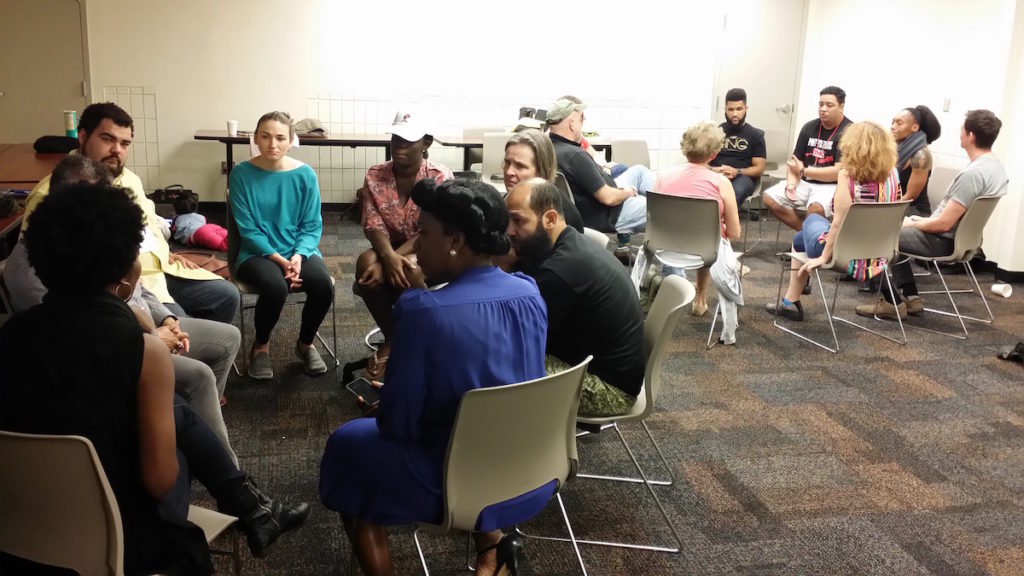
Art programs also recapture the fellowship of military life. “Part of what they miss about the military is serving in a unit,” Saloom explains. “When they come back to civilian life, nobody here even understands what they’ve been through.” Through the arts, veterans get to socialize and form new bonds, often in programs involving leadership and mentorship by other veterans. “It becomes another unit,” Saloom says.
Art programs also give civilian collaborators and audience members a chance to connect to the military and veteran community.
“As a society, we have a lot to learn from listening to veterans’ stories,” says Andrea Assaf. Besides producing the R&R Festival as part of this year’s National Summit, Assaf’s organization Art2Action has worked with veterans in the Tampa Bay area since 2013.
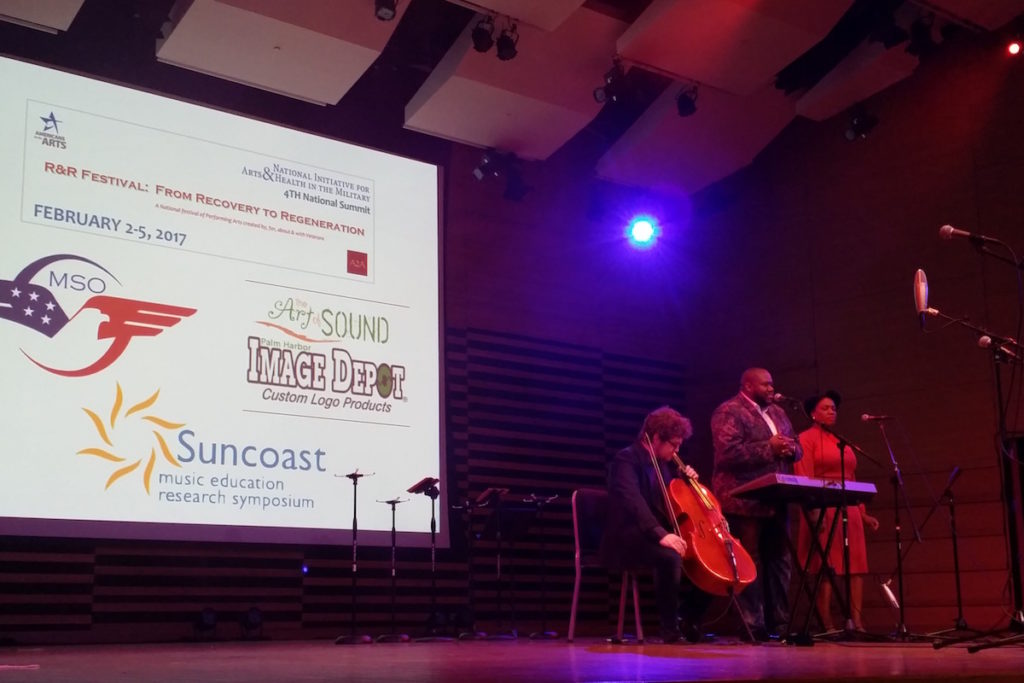
Founded in 2010, Art2Action creates, produces, and tours original theater and performance works; collaborates with other organizations to present work and to offer professional development for artists; and leads programs and partnerships for cultural organizing, which involves integrating arts and culture into activism and social justice.
“It just so happens that the Tampa Bay area has one of the largest active military and veteran communities in the country,” Assaf says. Working with veterans, then, has grown unexpectedly but naturally out of the organization’s mission to address social issues and engage with local residents.
Art2Action’s programs with veterans began during the production of Speed Killed My Cousin, a play by Linda Parris-Bailey that addresses multi-generational trauma and vehicular suicide in families through the story of an African-American woman veteran. The play was a partnership with the Carpetbag Theatre that was funded by Alternate ROOTS through a program called Partners In Action, which required a community component. Assaf began leading performance-based workshops with people in the Psychosocial Recovery and Rehabilitation Center at the James A. Haley Veterans’ Hospital in Tampa. Now, this collaboration has become an ongoing part of Art2Action’s work.
While teaching the workshops, Assaf learned that there were some things that the participants wouldn’t or couldn’t say on government property, and that their full ability to express themselves was limited within the VA. That led Art2Action to start the Veterans’ Open Mic at Sacred Grounds Coffee House in Tampa. Each month, veterans in recovery who have participated in Assaf’s workshops are invited to perform, along with other local veterans and their family members. Art2Action also typically brings in a guest artist.
Making the open mic public allows for veterans to build community with one another and with the wider population, and for general audiences to learn from veterans’ stories. One of the things that Assaf has learned, she says, is that veterans’ range of political viewpoints is wider than what might be assumed. She worried about the risk of inviting people in who have opposing opinions, but that hasn’t been a problem, she says: “By and large, the people who come find some peace and grounding in the art and the music and the opportunity to express themselves.”
Art2Action places particular importance on providing a safe environment and coordinating with clinical professionals. Touring Speed Killed My Cousin around the country, Art2Action and the Carpetbag Theatre reach out to each community’s VA, veterans’ organizations, and/or mental health providers to ensure that professionals can be present during the performance for people who may be triggered.
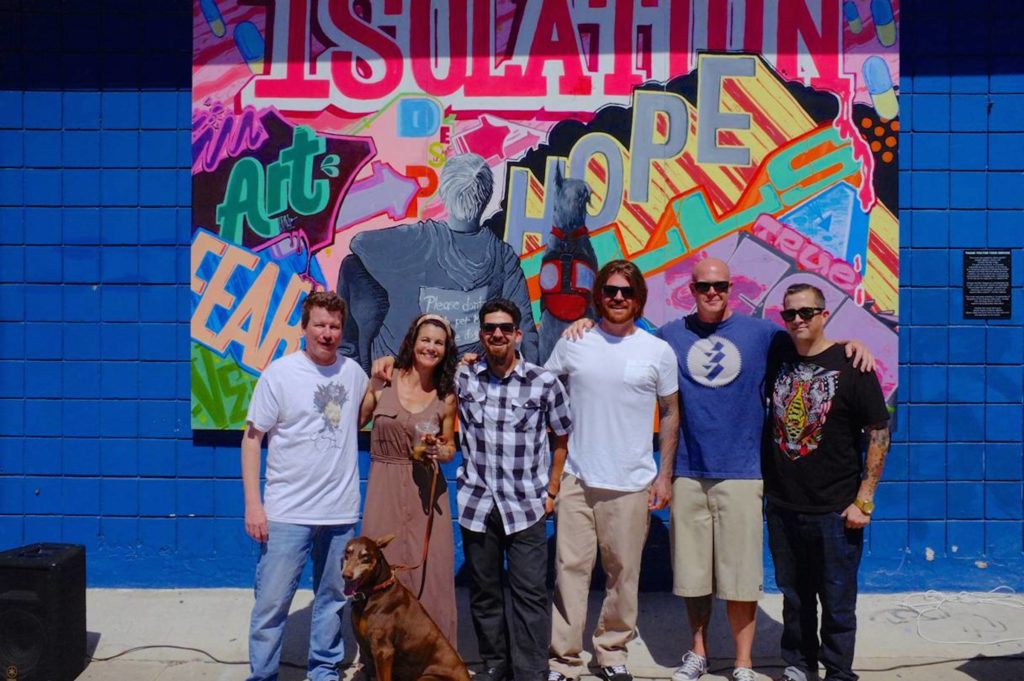
Working within the VA has allowed Assaf to think critically about how an artistic approach differs from and overlaps with therapy — for instance, “roleplay” in therapy versus “scene work” in theater. With art, she says, there’s an extra step: taking the activity outside of a clinical space and sharing it with the public.
“Once you actually share it with an audience, and you receive not only applause, but feedback that says, ‘I can relate to your story,’ that’s a huge moment for veterans,” Assaf says. “When they take that step to take something from the workshop environment to, say, the Veterans’ Open Mic, or a reading at a local church … suddenly they’re being appreciated for the courage that it takes to tell the truth. And so that starts to break the military-civilian divide, and that’s where the community building really starts to happen.”
As someone who is Arab-American and engaged in progressive activism, Assaf says, she has come to see veterans as allies and important voices in the causes and communities she fights for. “The thing that perhaps most connects my communities, locally and globally, with the veteran community is trauma itself, the trauma of war itself,” she says. “I want to see how we can get people together to send a larger message about ending war and violence.”
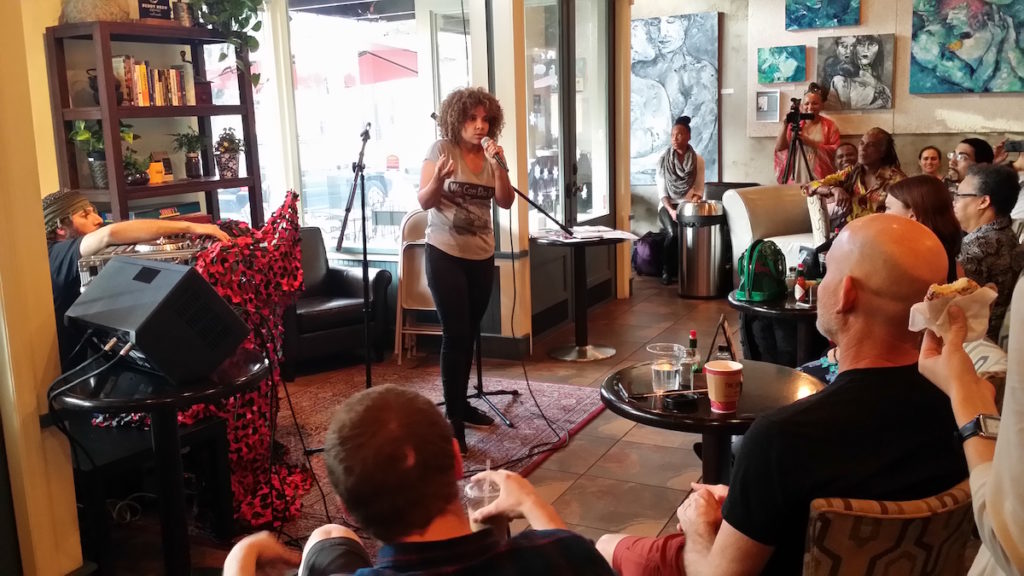
February’s National Summit provided a new opportunity to connect local efforts and communities in Tampa with people from the military, the arts, and the medical community around the country. Along with Americans for the Arts’ National Initiative, the University of South Florida, and the Carpetbag Theatre, Art2Action also worked with New England Foundation for the Arts, who hosted a similar convening with some of the same performers in March.
The R&R Festival opened with a production of Speed Killed My Cousin. The next night, co-presented with the university, featured a multi-media presentation based on veterans’ stories with the music department’s all-iPad ensemble, as well as a band called The War & Treaty that includes musician and Iraq War veteran Michael Trotter, Jr.
Night three focused on dance, with performances by solo dancer and veteran Makoto Hirano, wheelchair dancer and veteran Dwayne Scheuneman, Exit 12 Dance led by choreographer and veteran Roman Baca, and an excerpt from Healing Wars, choreographed by Liz Lerman. The final night showcased Isaura Ramirez, a comedian and former Army captain; Maurice Decaul, a writer and former Marine; the Combat Hippies, a group of performers who promote “post-traumatic growth”; and an open mic portion for veterans to perform.
The collaboration for the summit between Art2Action and Americans for the Arts also included a weekend of workshops for practitioners to share their work and ideas. “That meant that professional artists and therapists and social workers and service providers and veterans all got to exchange their practices with each other,” Assaf says, “which was wonderful to watch, and so much learning unfolded.”
As artists and organizers continue to advocate for the arts’ value in healing and in helping veterans transition to civilian life, that value is also being demonstrated through research. Being able to coordinate research is part of the power of the National Initiative, explains Susan Saloom, particularly because evidence is necessary for advocacy and federal funding. Currently, the initiative is compiling national-level data on the value of arts programs for military and veterans.
Research that shows the effects of the arts can have an impact beyond the military as well, Saloom says. Programs and tactics shown to help veterans can be brought to other people and communities, including any survivors of trauma.
“There’s so many levels that this can go, because the military represents the diversity of our country. It represents a cross-section of the American population,” she says. “The transgender forces, the experiences of women veterans, it crosses racial and socioeconomic divides.”
Art2Action’s work will also be studied, in a pilot project of the Tampa VA and the University of South Florida psychology department. The study will look at veterans from the recovery program that Assaf currently works with, as well as a new cohort of student veterans.
Meanwhile, Assaf and Art2Action — as well as dozens of other organizations working with military and veterans around the country — continue to hear about the transformative value of their work directly from service members, veterans, and their families.
“[People say,] ‘I forgot my anxiety during the workshop,’ or ‘I told a story that I’ve never told anyone before,’ or ‘I experienced joy and I forgot what joy felt like,’” Assaf says. “For someone who’s in mental health recovery to say, ‘I discovered that I do this well’ or ‘I like myself when I’m doing this’ is a huge step.”
As the National Initiative’s extensive directory illustrates, this work is happening in organizations and agencies throughout the U.S. Watch for part two of this story, sharing more examples of programs for military and veterans across the arts.
Editor’s note: As an organization based in Tampa, Florida, Art2Action has been dealing with the impact of Hurricane Irma. To support them, please make a donation here.
